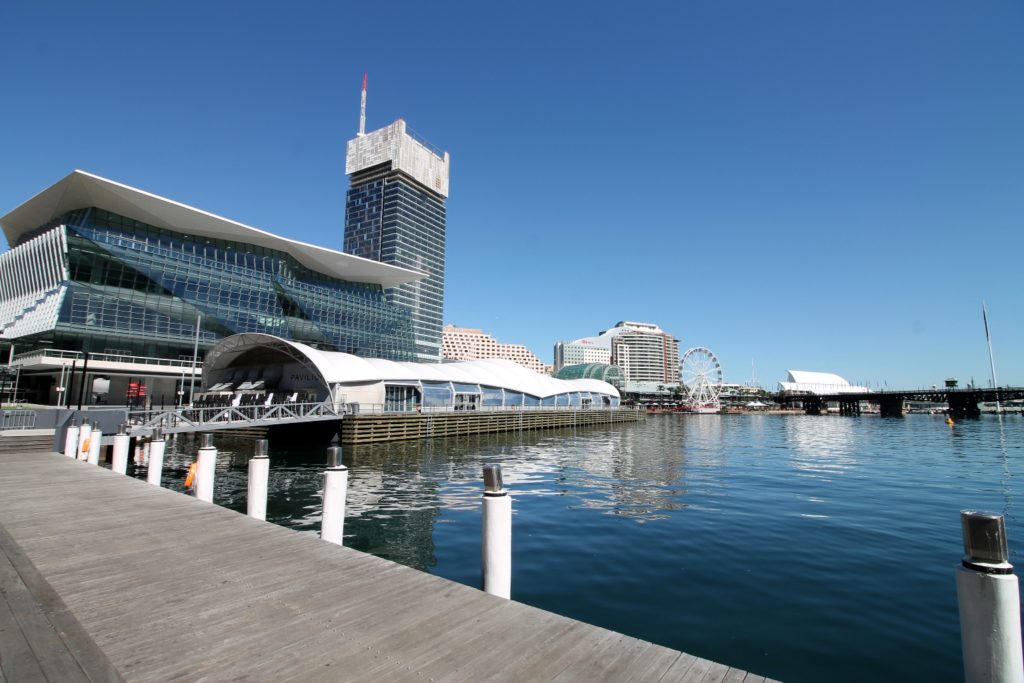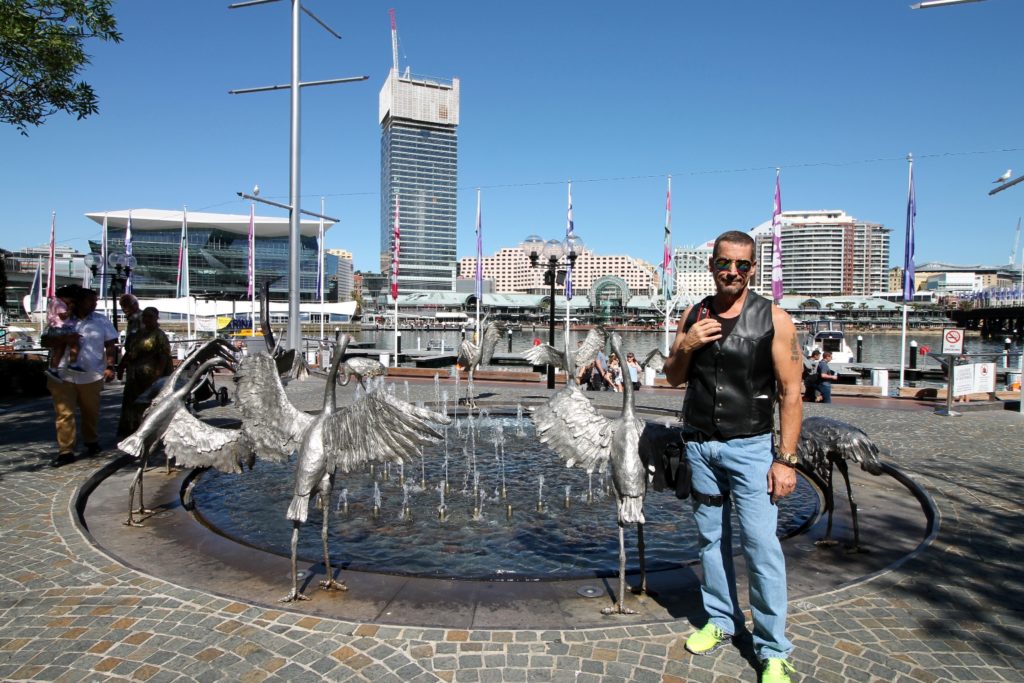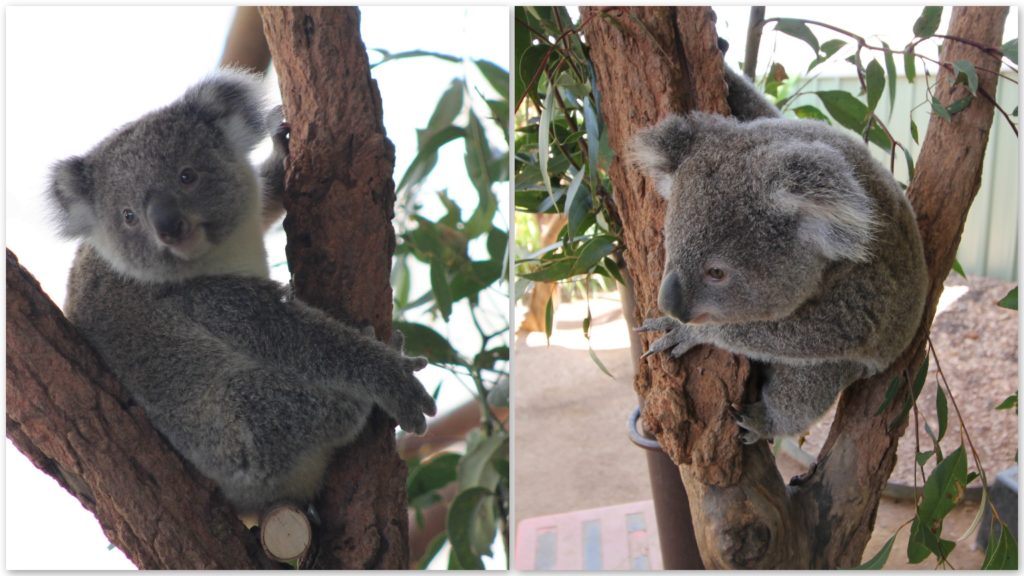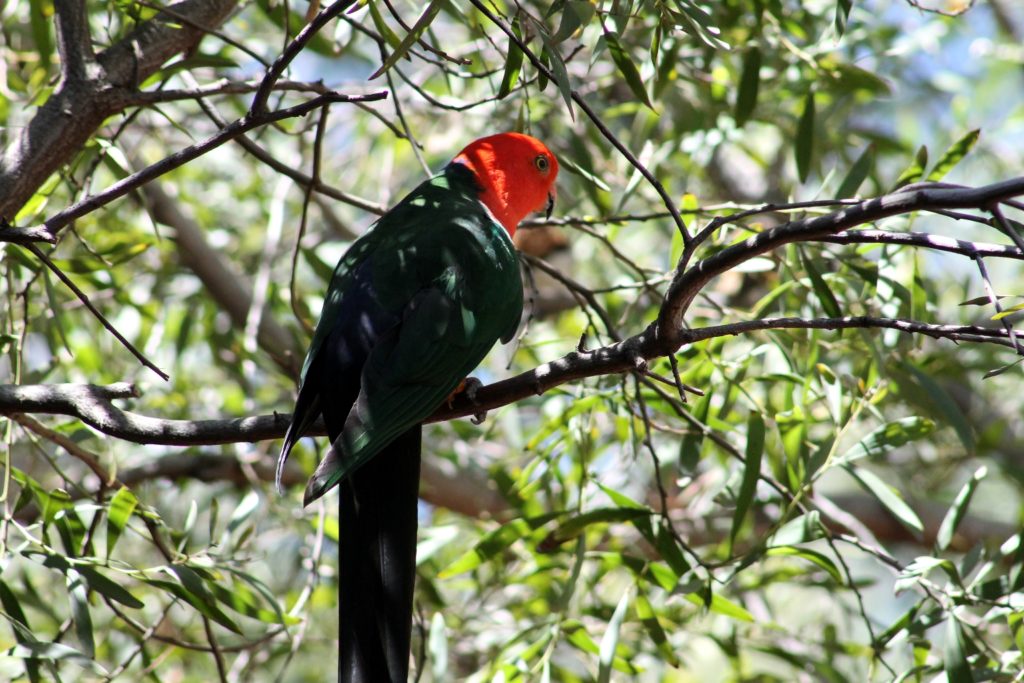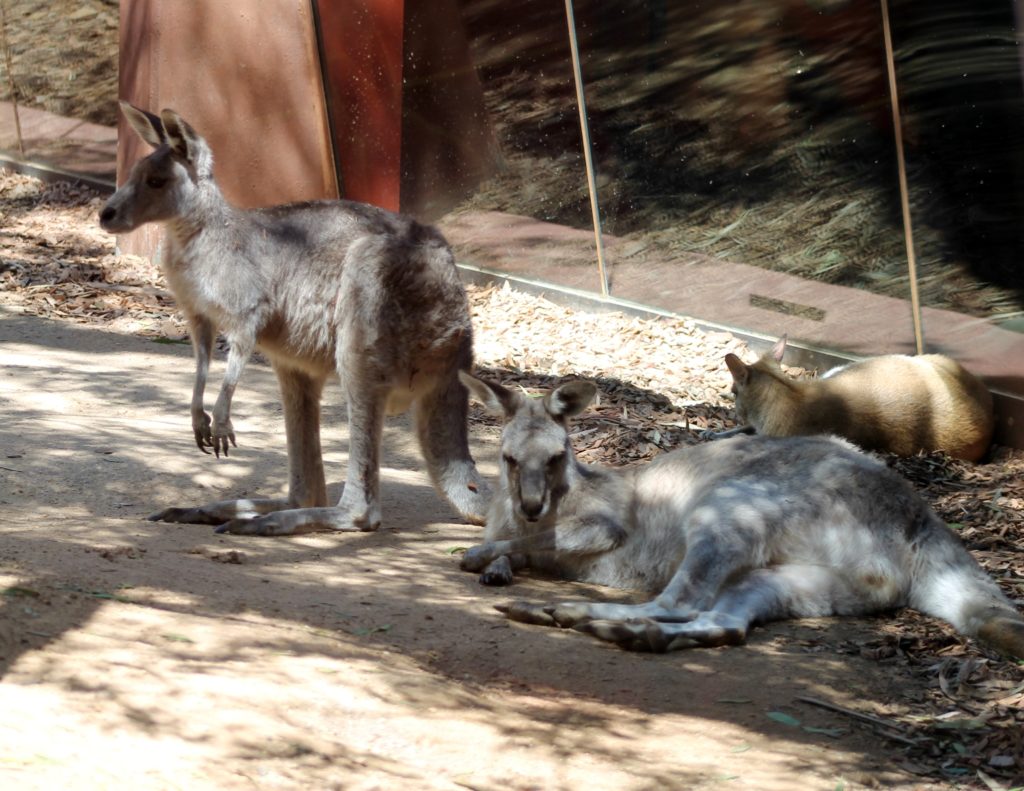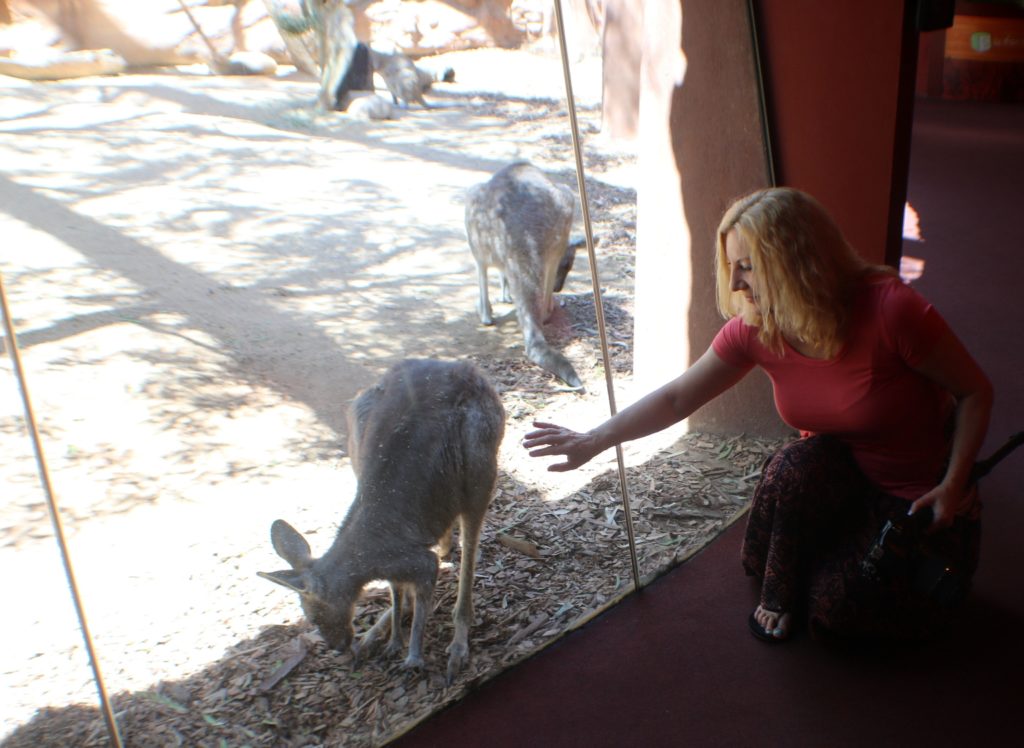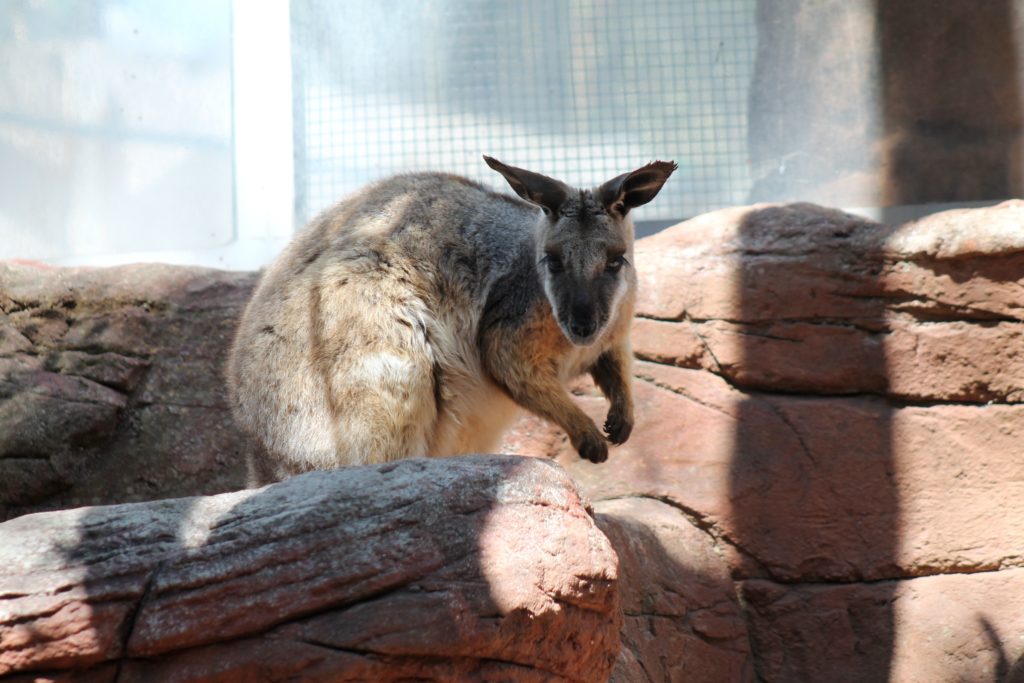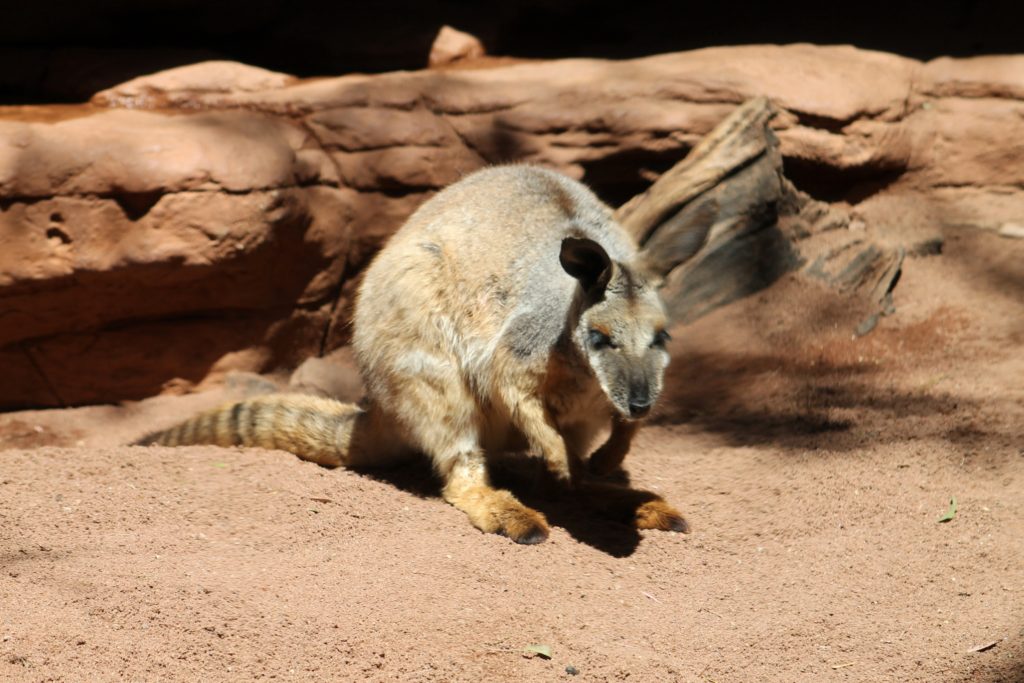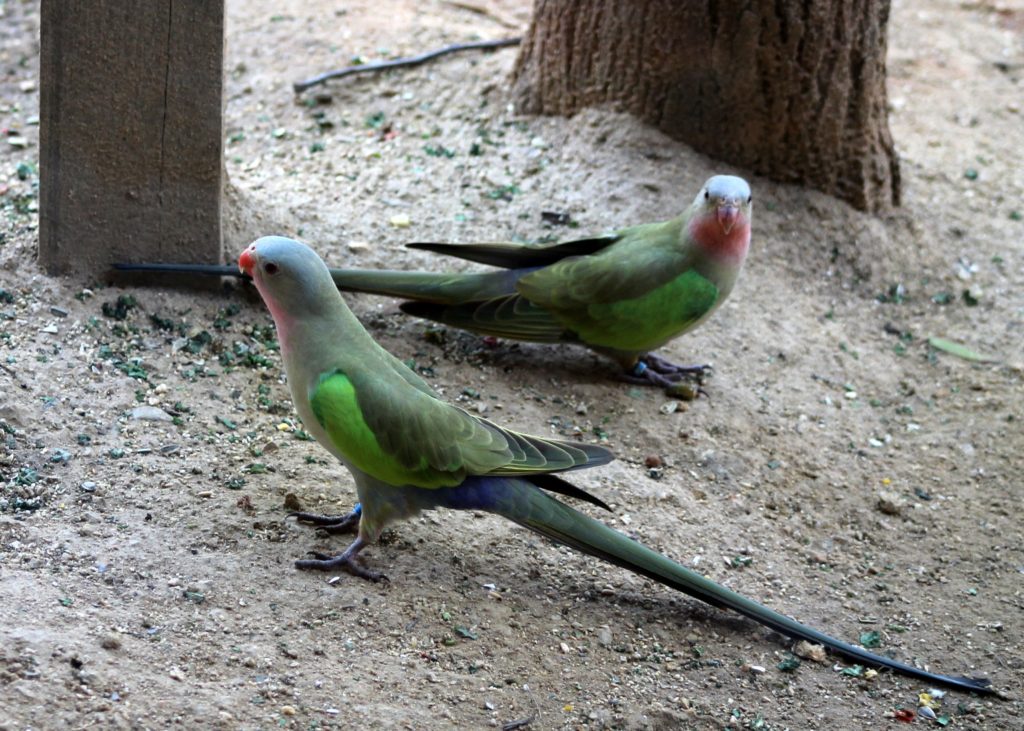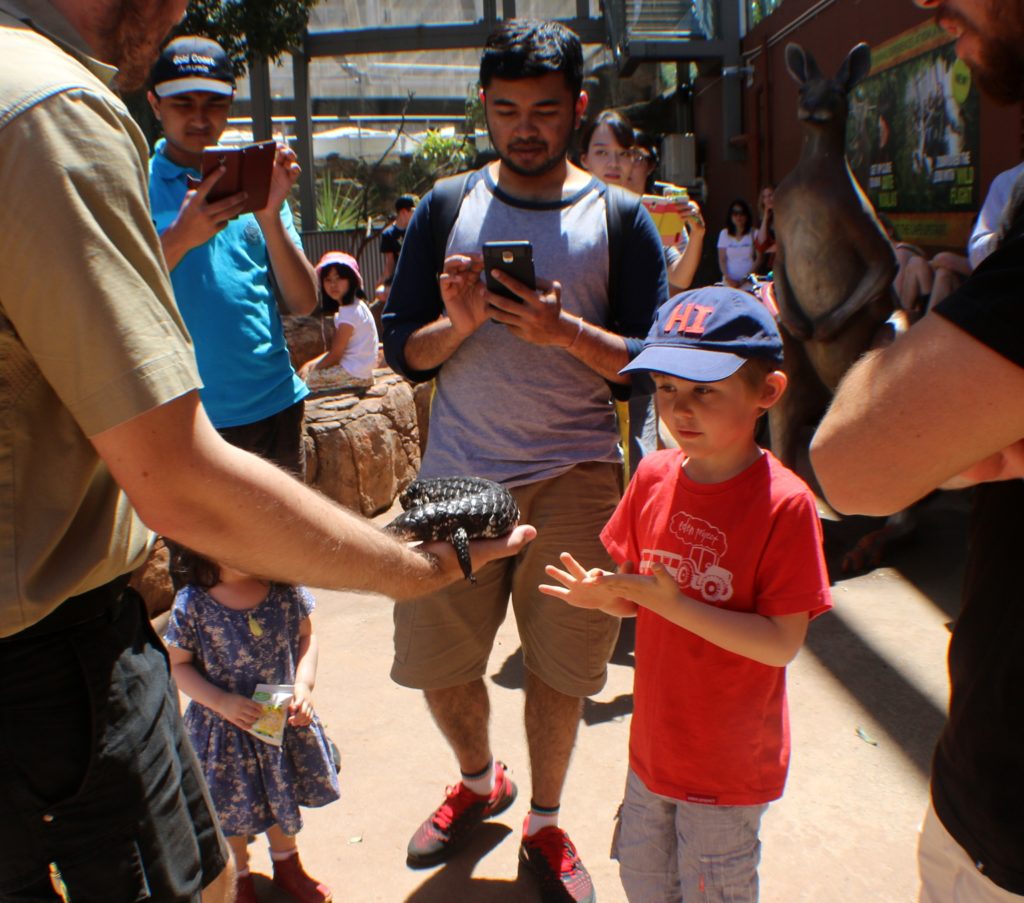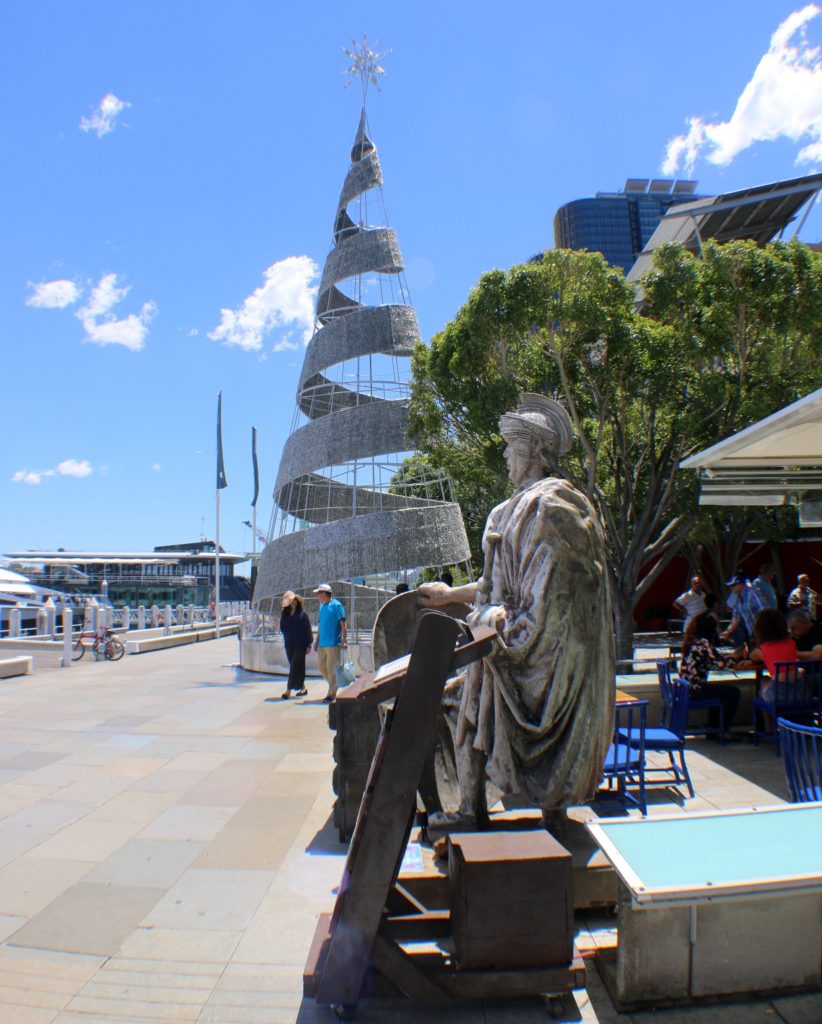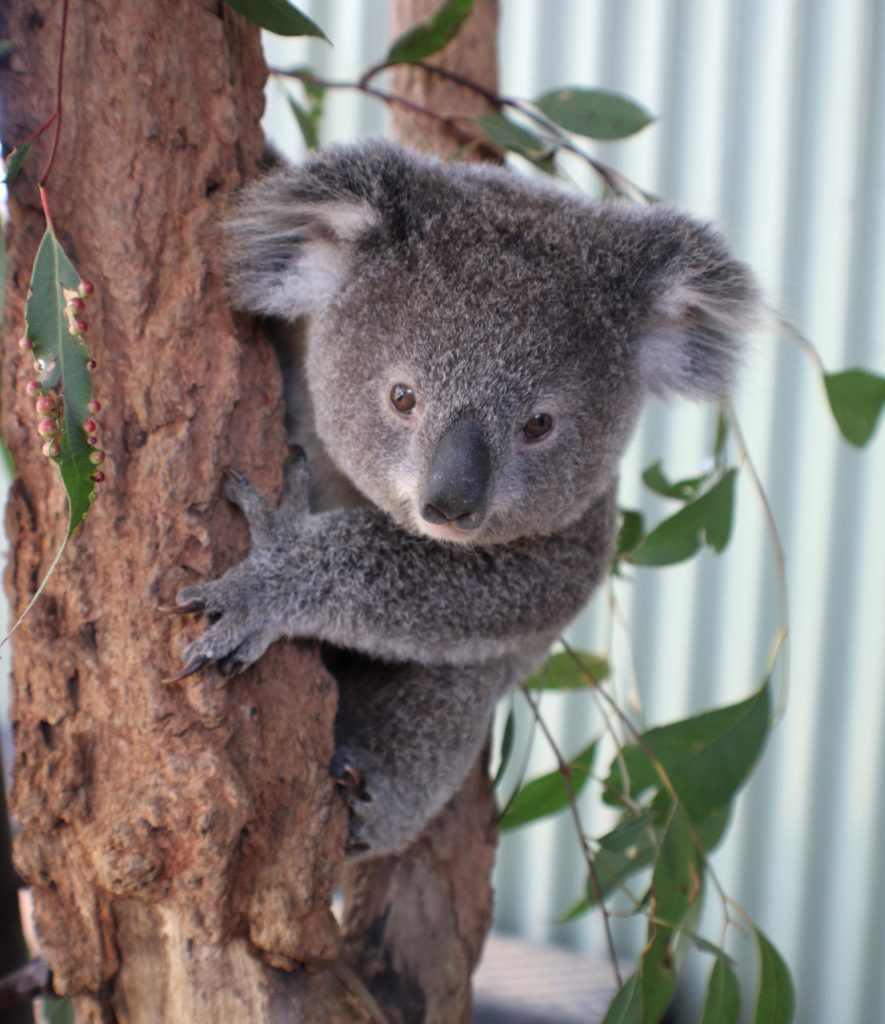
Dave and I spent a whole day at Darling Harbour, which is known for marvelous entertainment, delicious waterside dining and amazing wildlife. Darling Harbour is located in the heart of Sydney within walking distance from our hotel. It was a beautiful sunny day, so we enjoyed our morning stroll through the quiet as of yet, Sydney’s streets to the harbor and delicious coffee with pastries on the way.
We met penguins and dugongs at SEA LIFE Sydney Aquarium and got up close to koalas at WILD LIFE Sydney Zoo. I will tell all about the Sea Life Aquarium in the next post. Here I would like to share our experience in Wild life Sydney Zoo, where we walked through iconic Australian habitats and encountered some of the most loved, feared and unique animals.
A few shots of Darling Harbour on our way to the Zoo. The harbor looked so nice and peaceful in the morning, but later in a day it became very crowded.
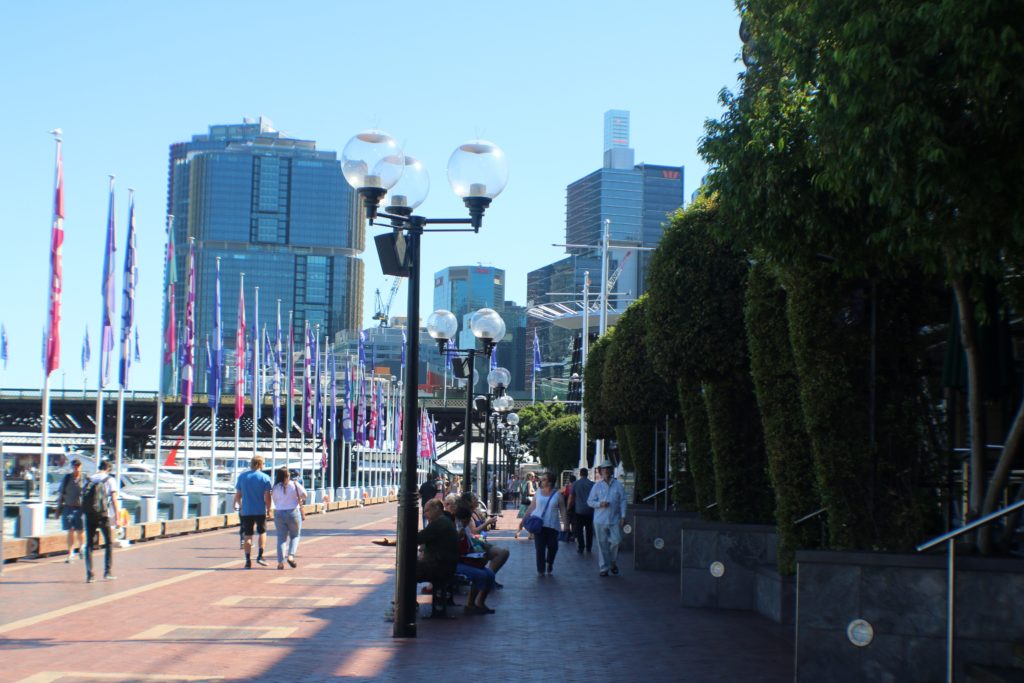
We started our adventure with the koala encounter on an open-air rooftop, which allowed us to get up-close for an amazing photo with these cute and cuddly Aussie legends in their gum tree habitat. It was really cool. 🙂
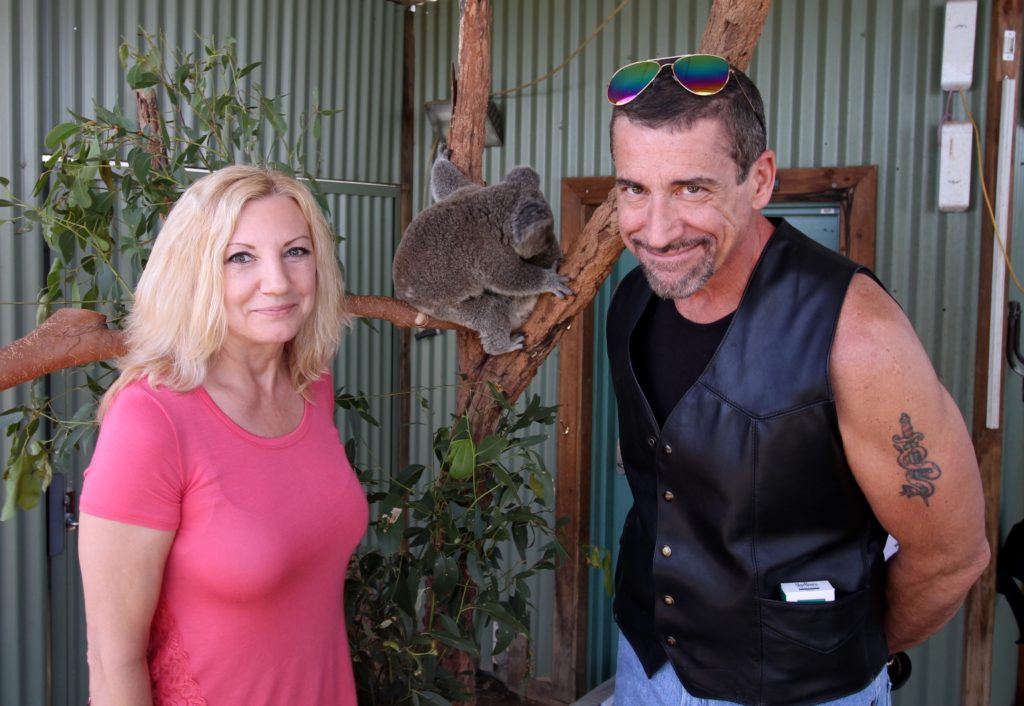
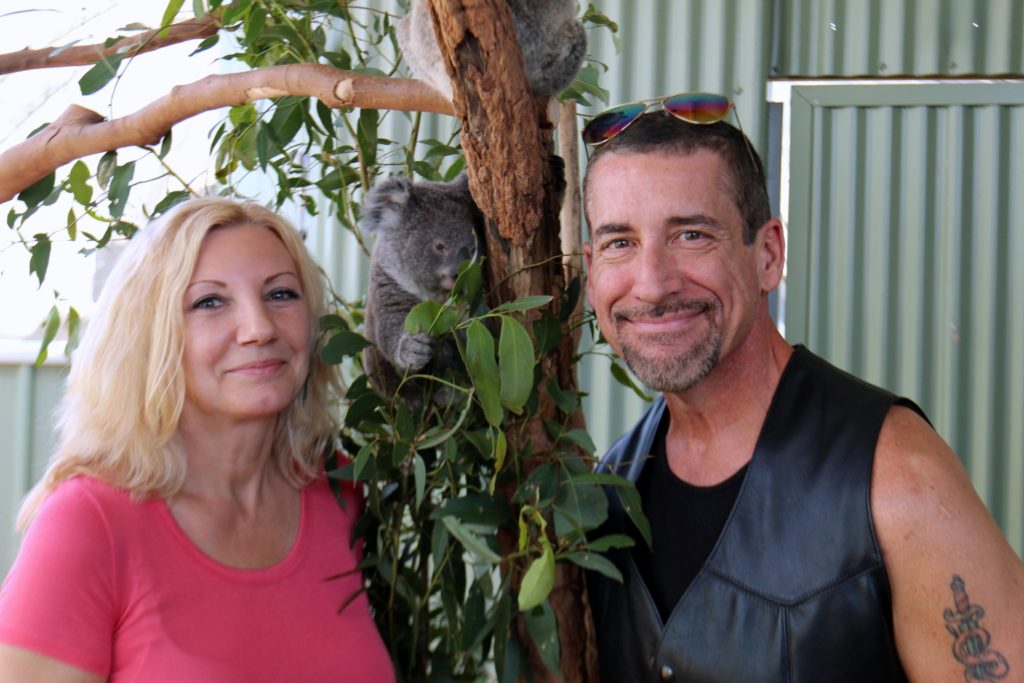
We were not allowed to touch the koalas, but we didn’t mind when they touched us. I guess, a koala was trying to make friends with Dave.
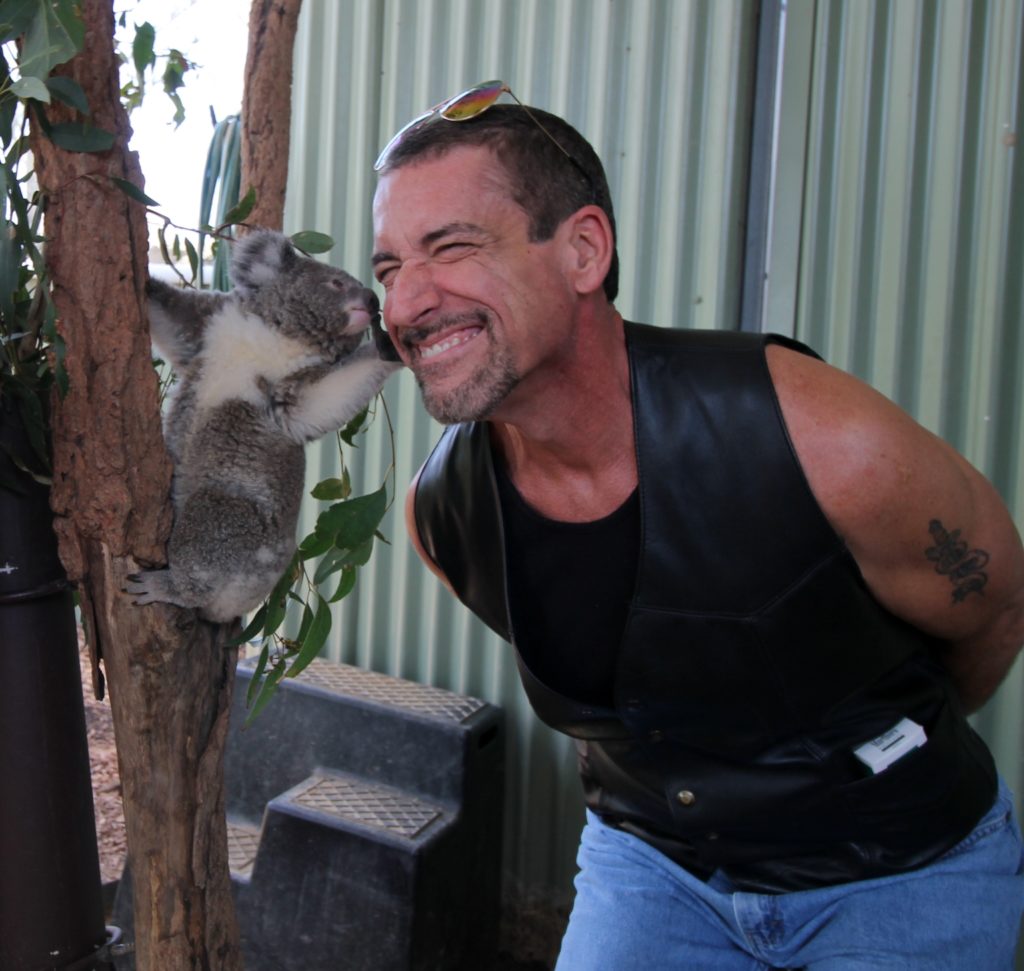
They are incredibly cute, aren’t they?
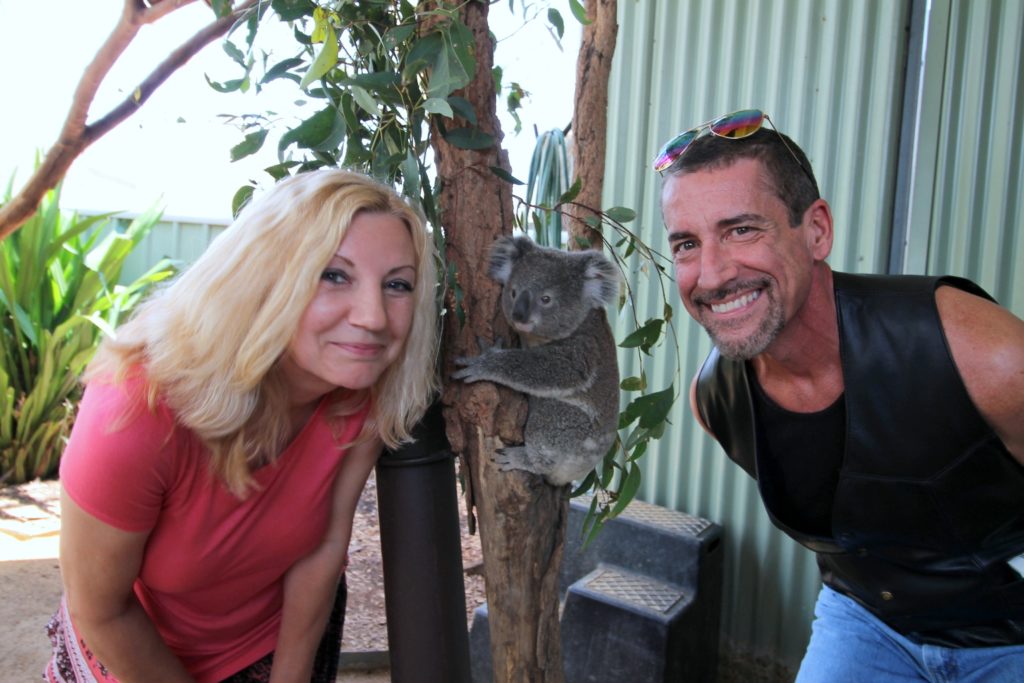
The zoo keeper girl took most of the pictures, but it was nice to allow us to take some pictures ourselves as well. We got some nice shots there.
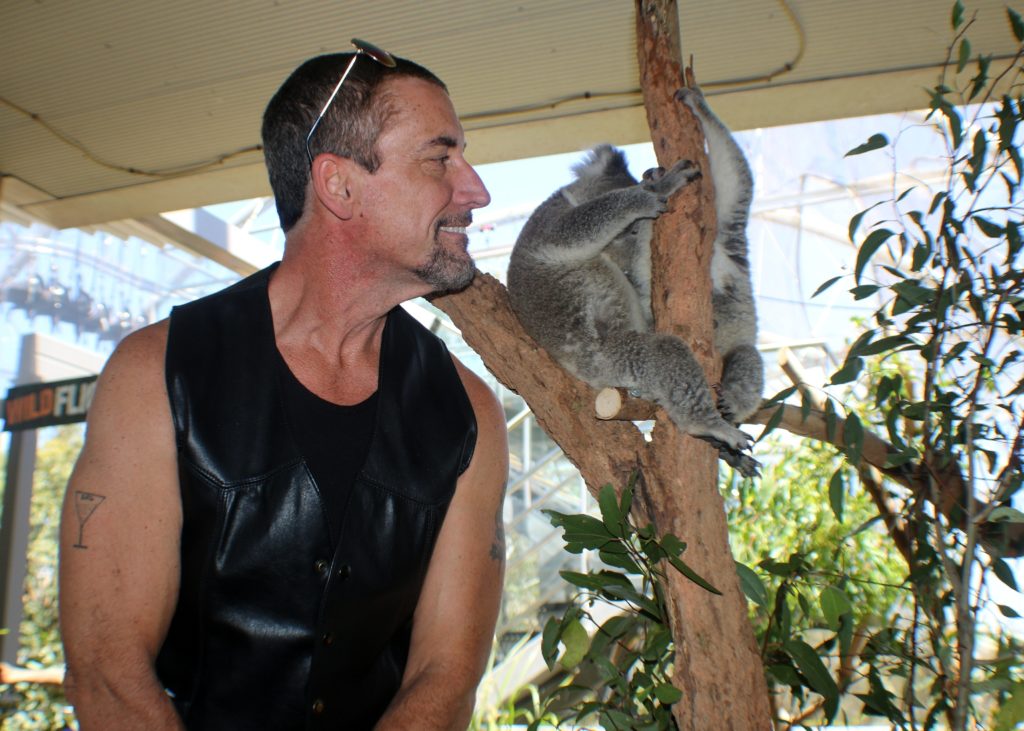
Arguably, koala is Australia’s most iconic animal. Koalas live the typical laid back, ‘no worries mate’ Australian attitude and lifestyle better than any other animal – sleeping for around 20 hours a day! They spend most of their time awake eating, make a sound like a motorbike and yet they are one of the most captivating and interesting creatures Australia has to offer!
The zoo is gorgeous and has a lot to offer such as encountering the world’s most dangerous bird, the Cassowary, in the Daintree Rainforest, exploring Kangaroo Walk-About, meeting koalas in Gum Tree Valley and more!
Wild Life Sydney Zoo features interactive displays, entertaining keeper talks and enhanced walk-through habitats. Here, we are exploring Butterfly Tropics, where I took a picture of this beautiful butterfly.
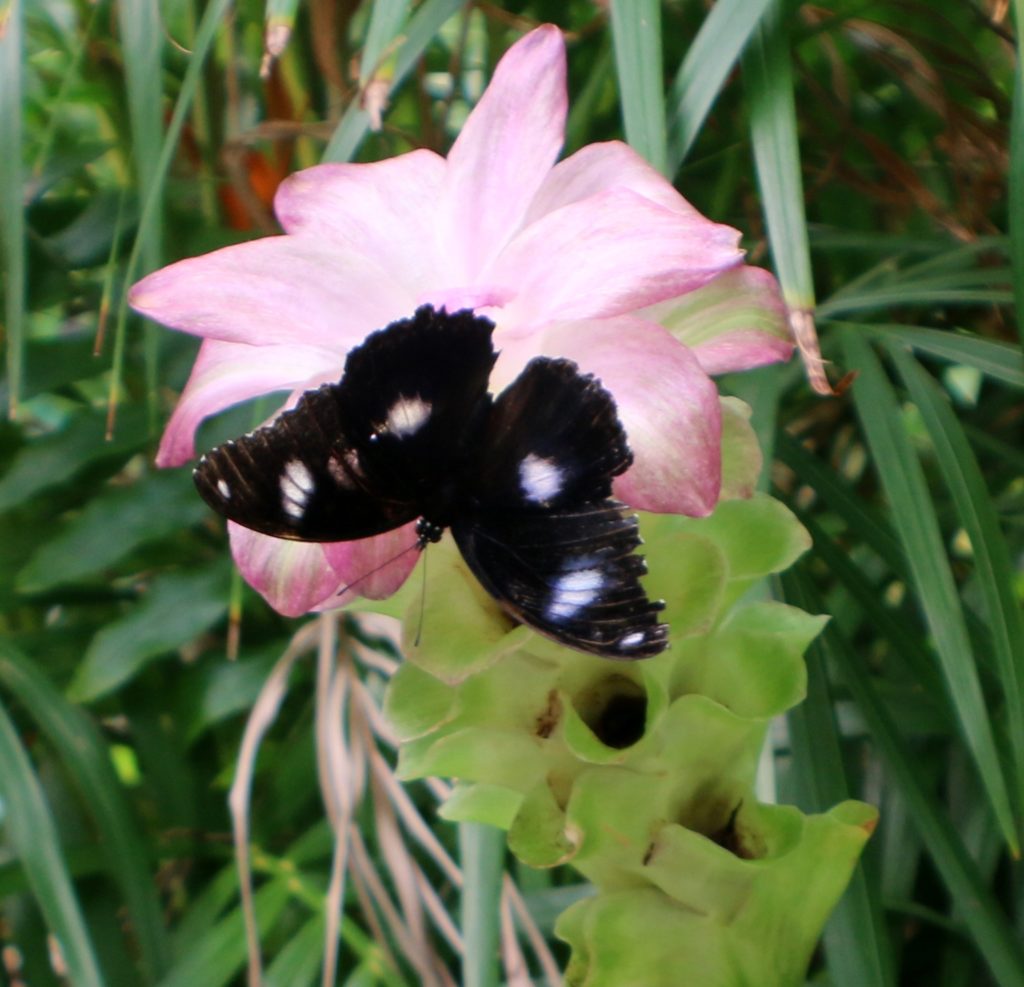
There are around 4000 species of frogs world-wide and Australia is home to over 200 native frog species, which have adopted to a wide range of habitants from the wet tropics to the cold region of the Southern Alps.
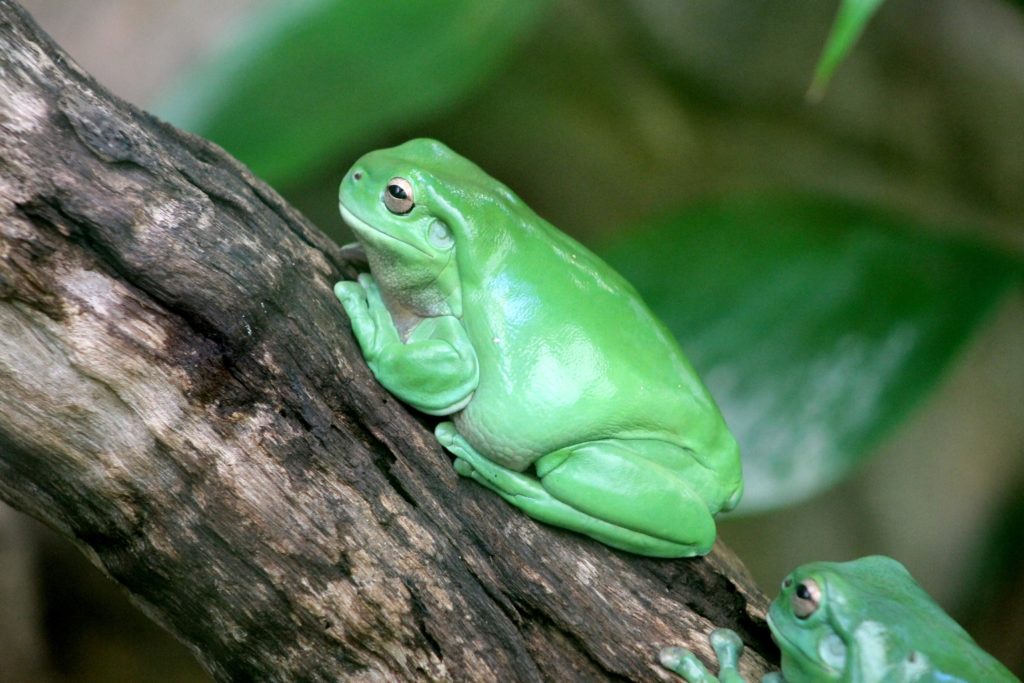
I have never seen black frogs before.
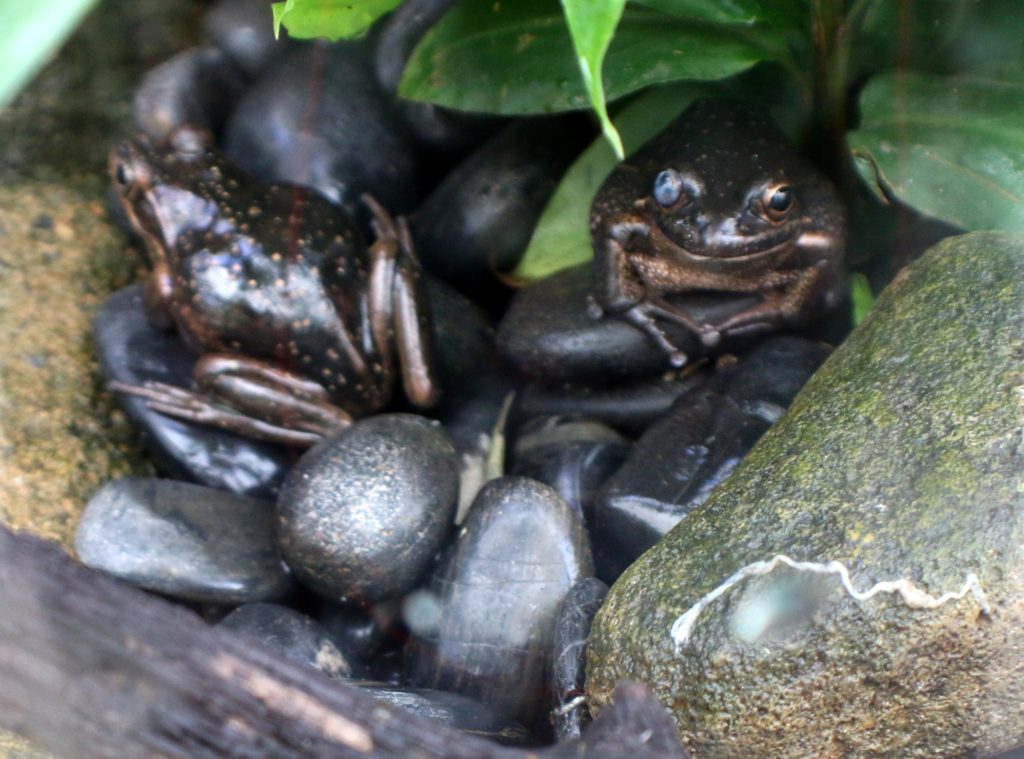
The red-legged pademelon is a marsupial rainforest kangaroo. As is typical of marsupials, when a baby pademelon is born they are incompletely developed and are generally carried and suckled in a pouch on their mother’s belly. The red-legged pademelon is found both in Australia and New Guinea. Red-legged pademelons are the only ground dwelling wallaby that lives in Wet Tropics rainforests. It prefers rainforests, but also grazes on grasses at the forest’s edge.
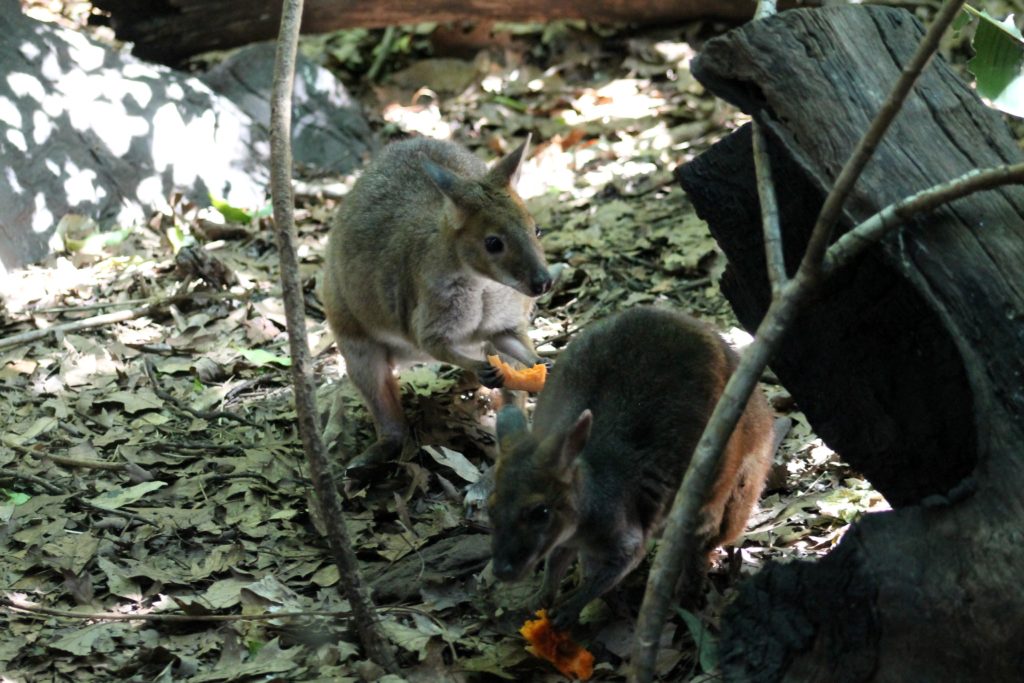
Standing at 170-180cm tall, and weighing up to 65kg, Southern Cassowaries are the world’s third tallest bird and second heaviest. They inhabit tropical rainforests in far-north Queensland, as well as Indonesia and Papua New Guinea. Occasionally they will inhabit fruit plantations, savannah forests and mangroves.
Southern Cassowaries are omnivorous, feeding primarily on fruits, seeds and berries, as well as fish and carrion. These birds are strong runners and excellent swimmers! Interesting fact that it’s the male cassowary that looks after the chicks and teaches them which fruits are safe to eat. What great dads!
Southern Cassowaries will ‘spar’ with each other and predators, jumping up and kicking both feet forward. This kick is extremely powerful and can be deadly to humans.
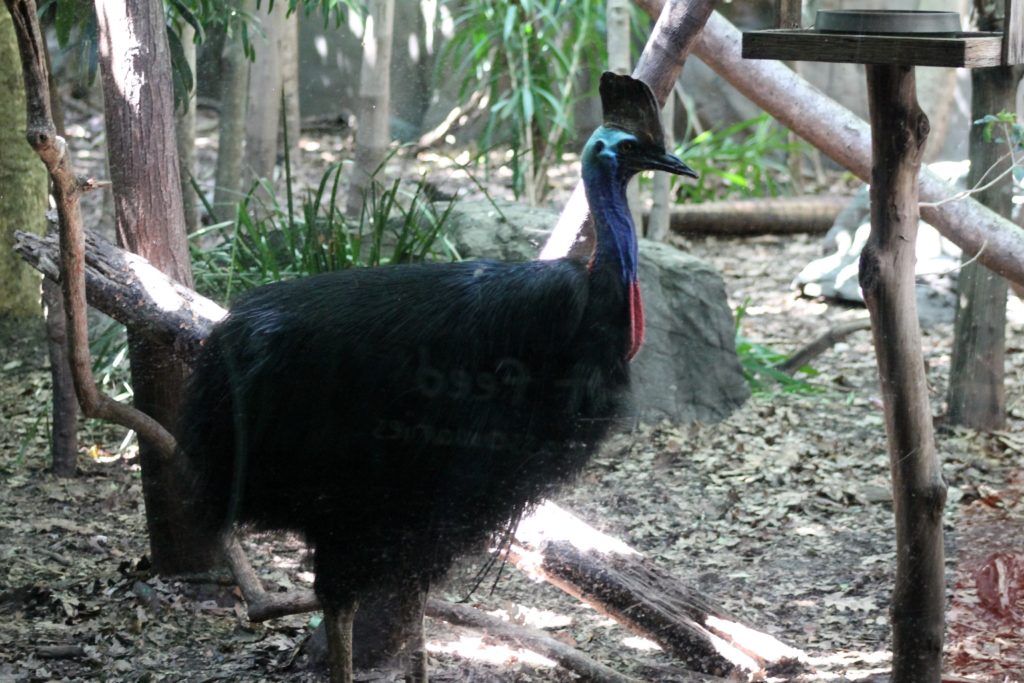
Australian King Parrot. He is such a beauty. it is very easy to distinguish between the sexes as males have bright red feathers on their heads whereas females have green.
The Zoo is home to numerous reptile species. The Green Tree Python is among them. The vivid green scales for which it is named help to camouflage them amongst the lush foliage of their rainforest habitat. The Green Tree Python lives in the hot, humid conditions of northern Australia, Indonesia and Papua New Guinea.
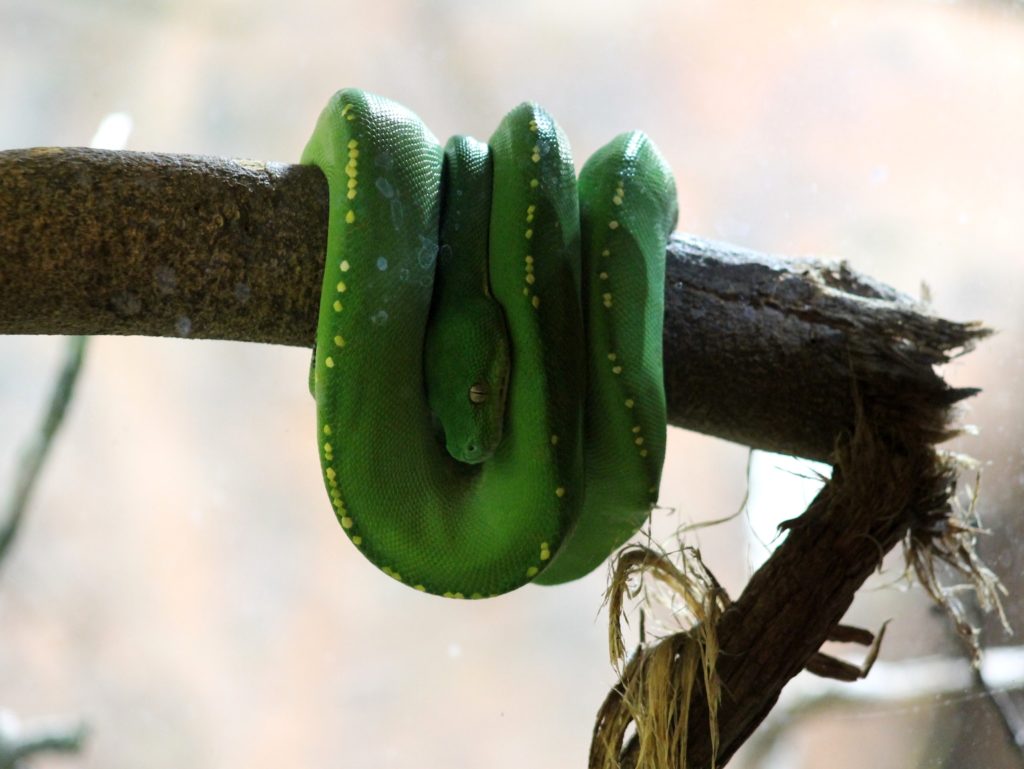
The Diamond Python is a medium to large snake found in coastal areas and adjacent ranges of south-eastern Australia.
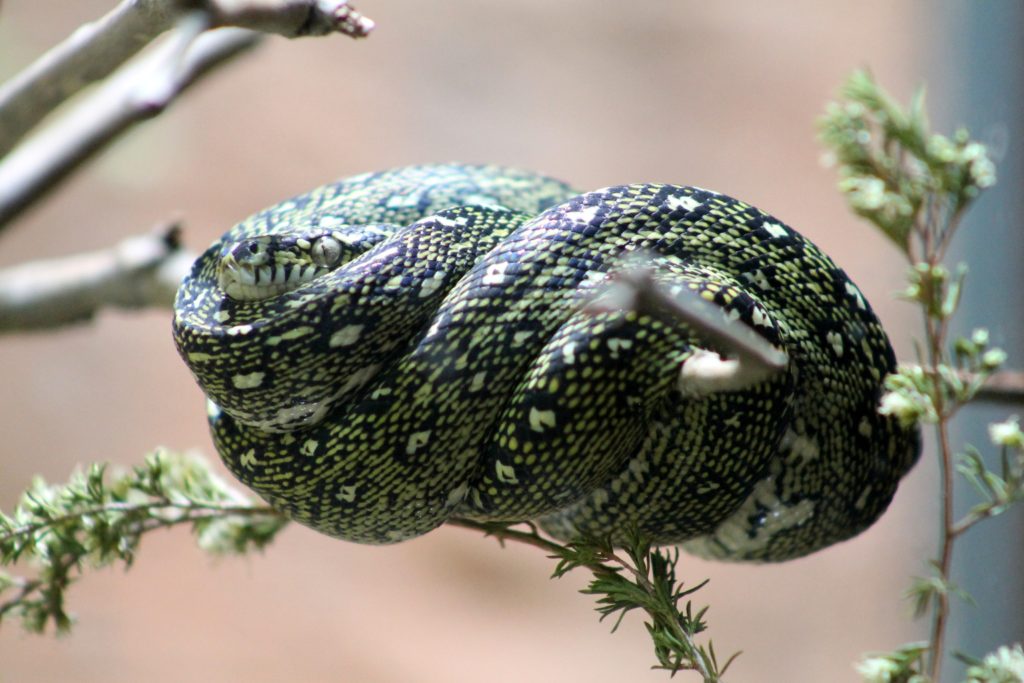
Spencer’s Monitor. This robust lizard can de found on the freeless grassy plains of central Queensland and the Northern Territory. They feed on almost anything they can catch including insects, birds, mammals, reptiles, eggs and carrion, they have even been known to feed on highly venomous snakes.
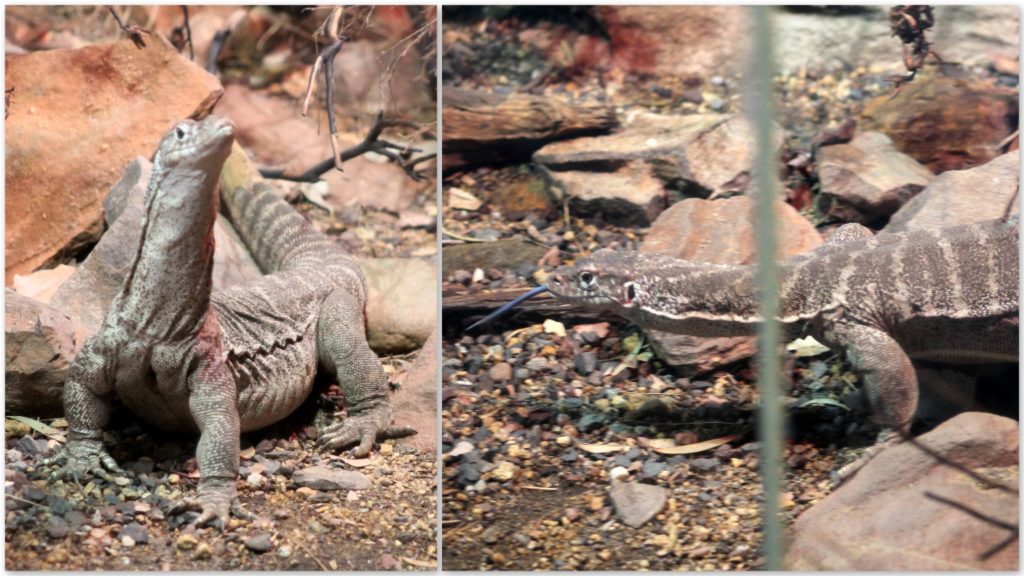
Kangaroo Walk-About showcases Eastern grey kangaroos, a quokka, agile wallabies, echidnas and princess parrots.
Kangaroos and wallabies are very similar marsupials that belong to the same family. Their native territories often overlap, but wallabies are generally much, much smaller than kangaroos with a color pattern that is much more varied. The lifespan of a kangaroo is much longer, and these larger animals take longer to grow, and become more independent than their relatives.
The babies of both are called a joey, and both will have one baby at a time; the mothers carry their young in their pouch until they’re not only weaned, but fully independent. Both wallabies and kangaroos live in small family groups called mobs.
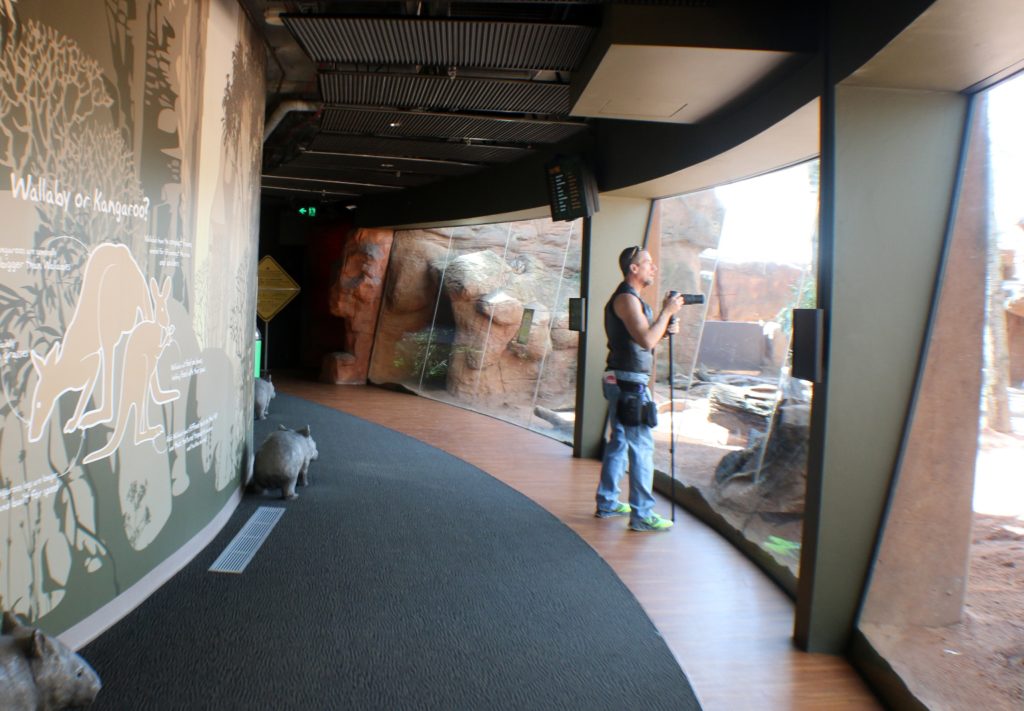
Here we met the Grey Kangaroos.
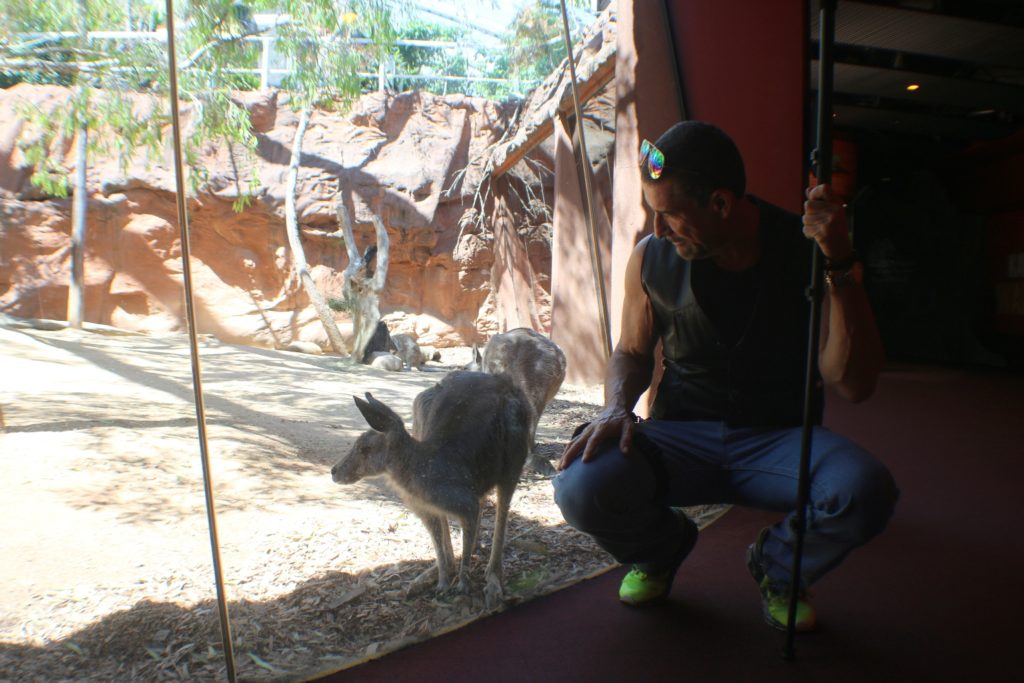
Wallaby Cliffs is home to some of the toughest Australian animals, yellow footed rock wallabies.
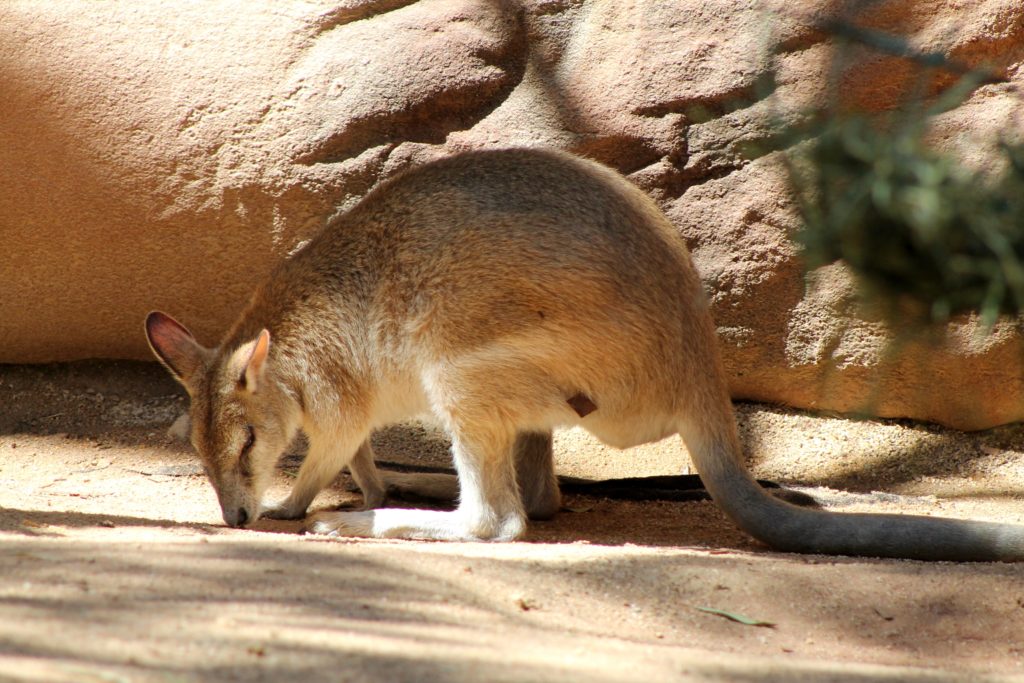
Haha. This kangaroo is pretty tall.
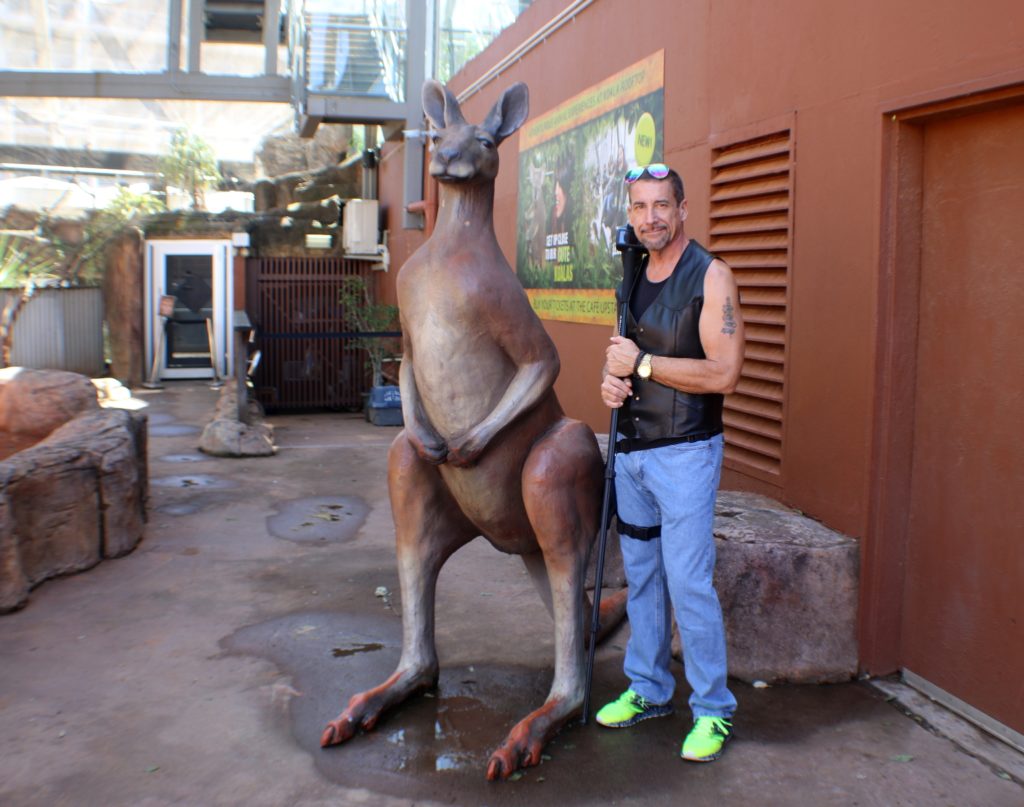
Here we met cheeky Davey, the quokka.
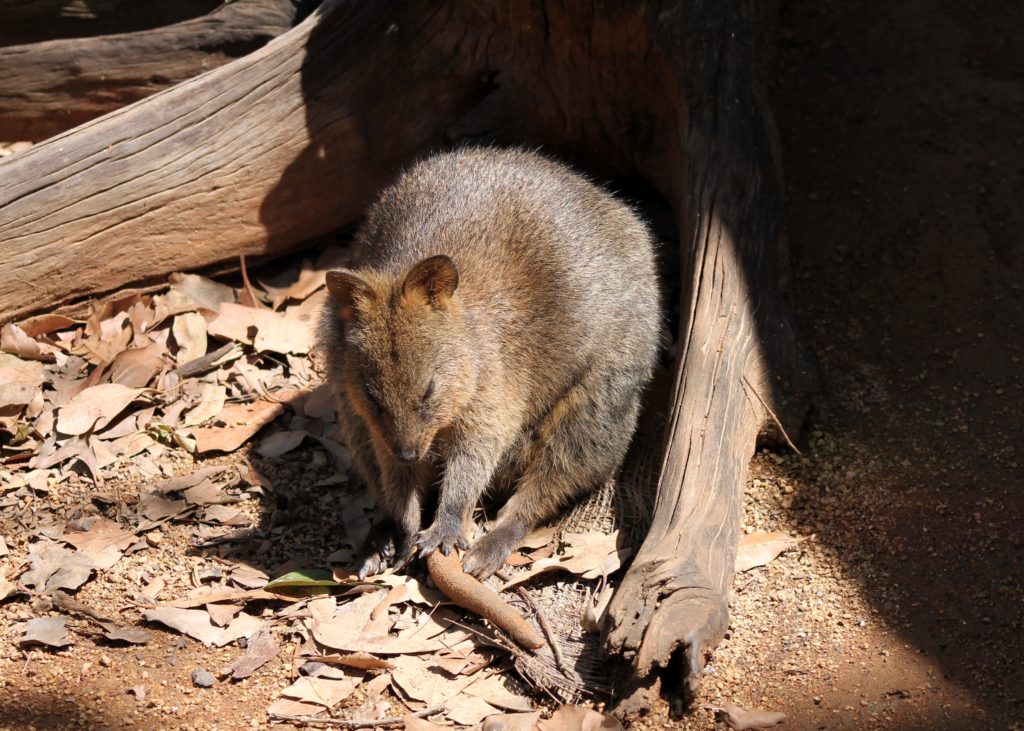
Famous for their territorial and communicative ‘laugh’, the Laughing Kookaburra is an iconic Australian species. Also called Giant Kingfisher, Laughing Jackass and Settler’s/Bushman’s Clock. The kookaburra is the world’s largest kingfisher. Older brothers and sisters help out with caring for the chicks.
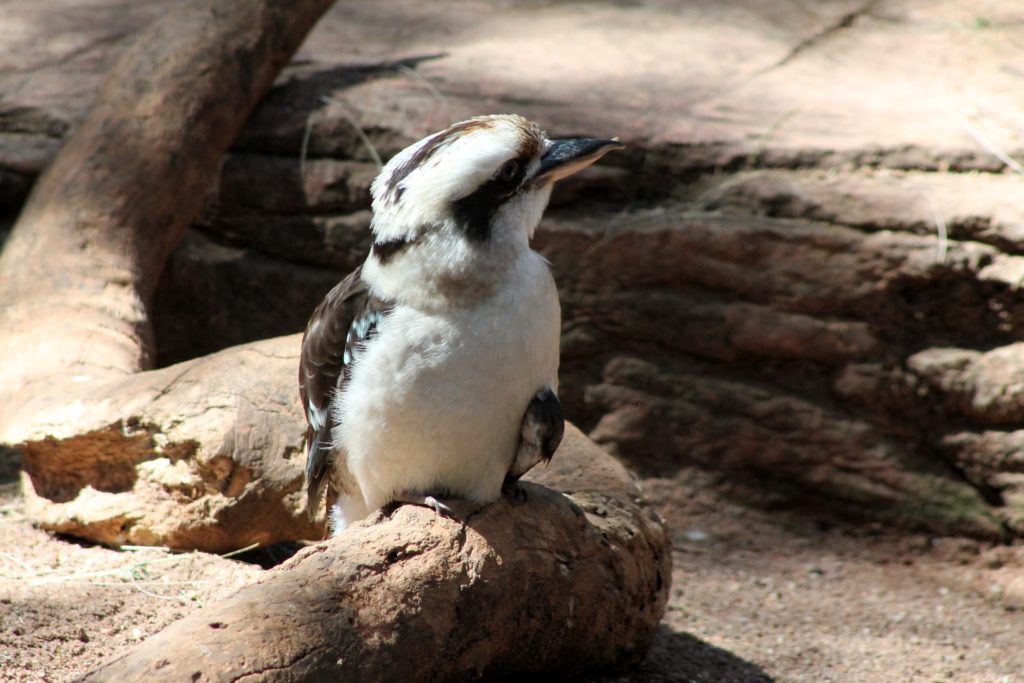
The Bush Stone-curlew is quite an unusual looking bird, and unlike any other bird found in Australia. Bush Stone-curlews are nocturnal birds (night birds), doing all their feeding and other activities at night.
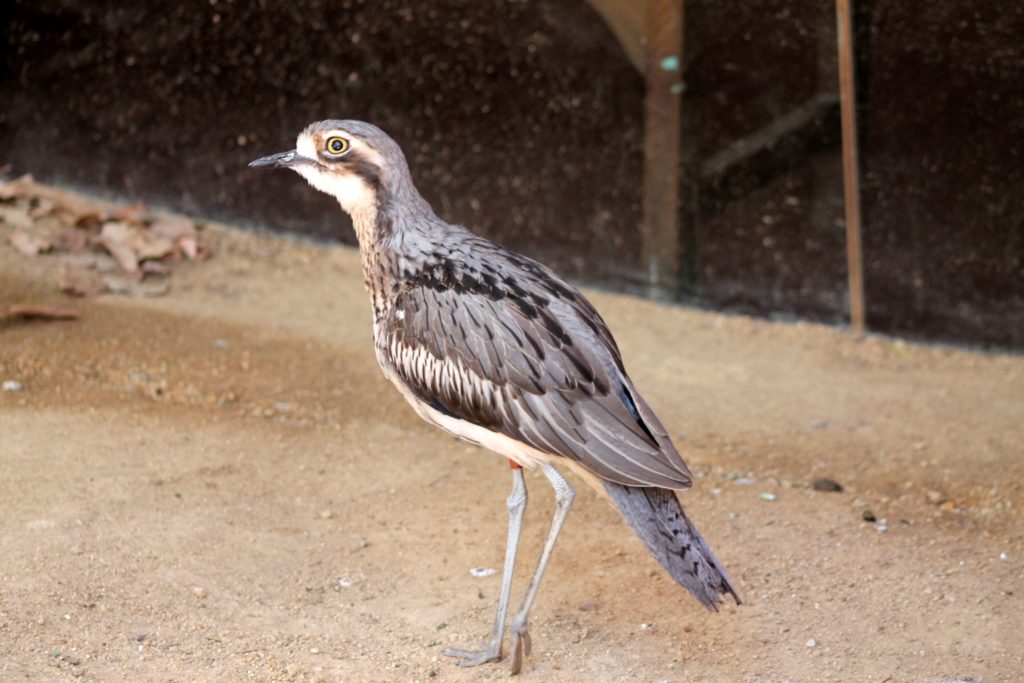
Princess Parrots. Such elegant birds.
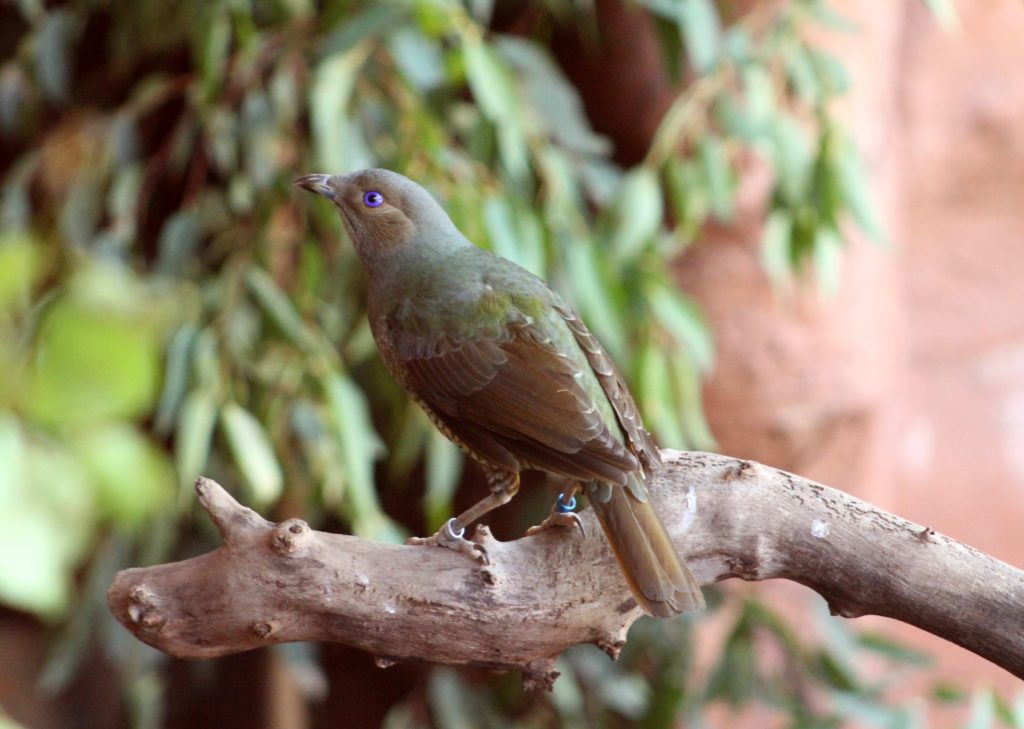
A spikey echidna is an egg-laying mammal with a pouch for their young to develop in after hatching.
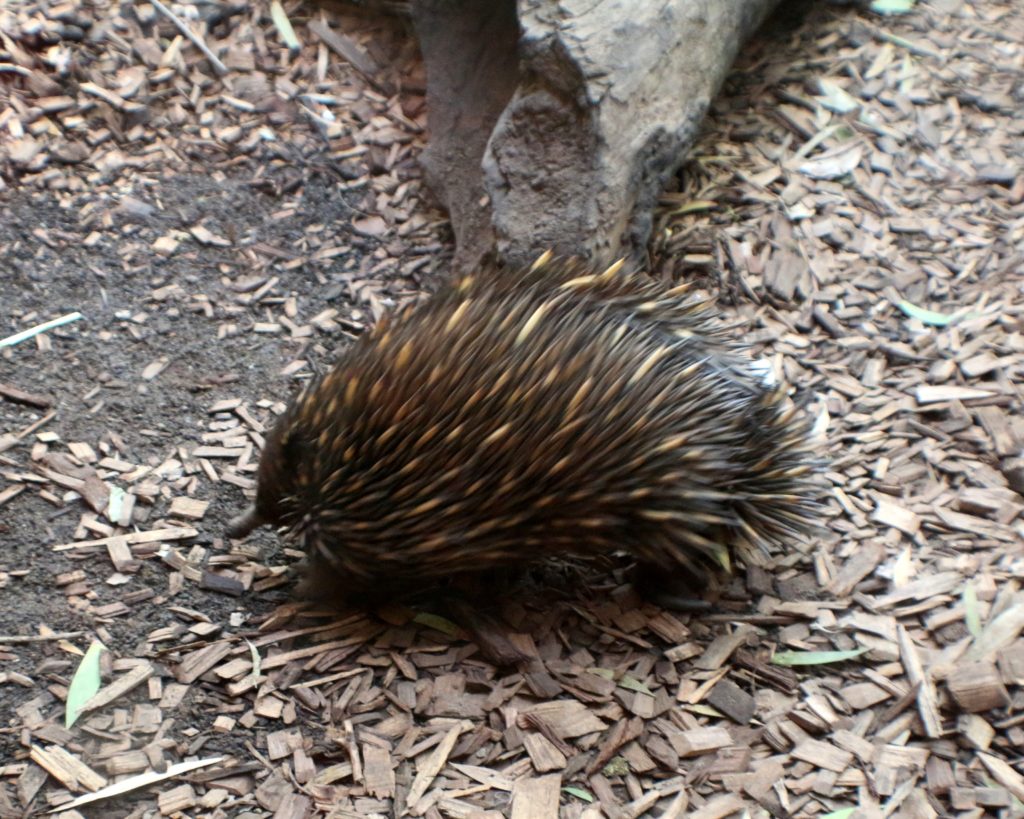
Did you know Tasmanian Devils are the world’s largest living marsupial carnivore and for their size they have the strongest bite force of any mammal? Sadly, these iconic Aussie animals are facing the real threat of extinction in the wild due to the fatal Devil Facial Tumour Disease (DFTD).
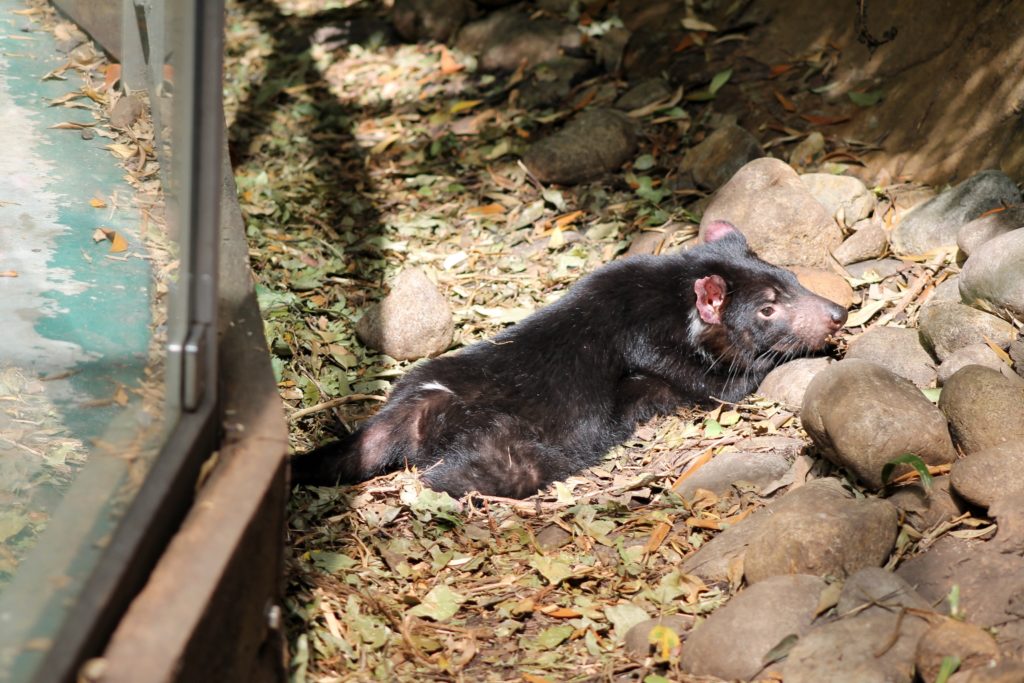
The spotted-tailed quoll is the largest marsupial carnivore on mainland Australia. It is a voracious predator and will eat anything from insects to small wallabies, but will also feed on animal carcasses.
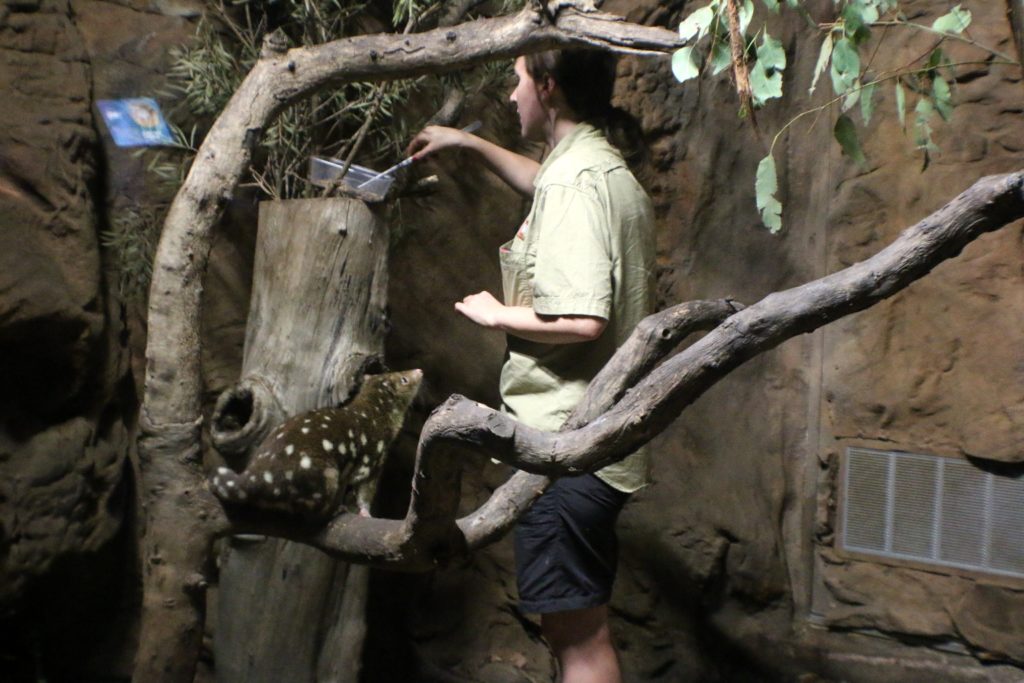
The goliath stick insect is one of Australia’s largest insects, but goes unnoticed because it is extremely well camouflaged and is usually up in Eucalyptus trees feeding on leaves.
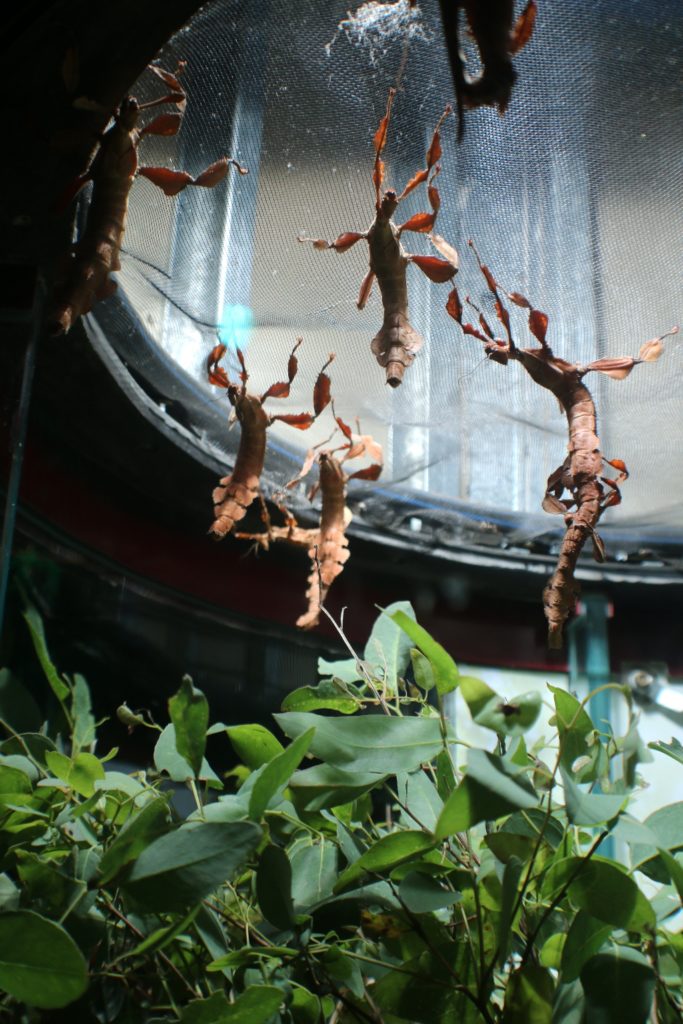
According to these information boards in the zoo, Australia is full of the most unique species on the planet.
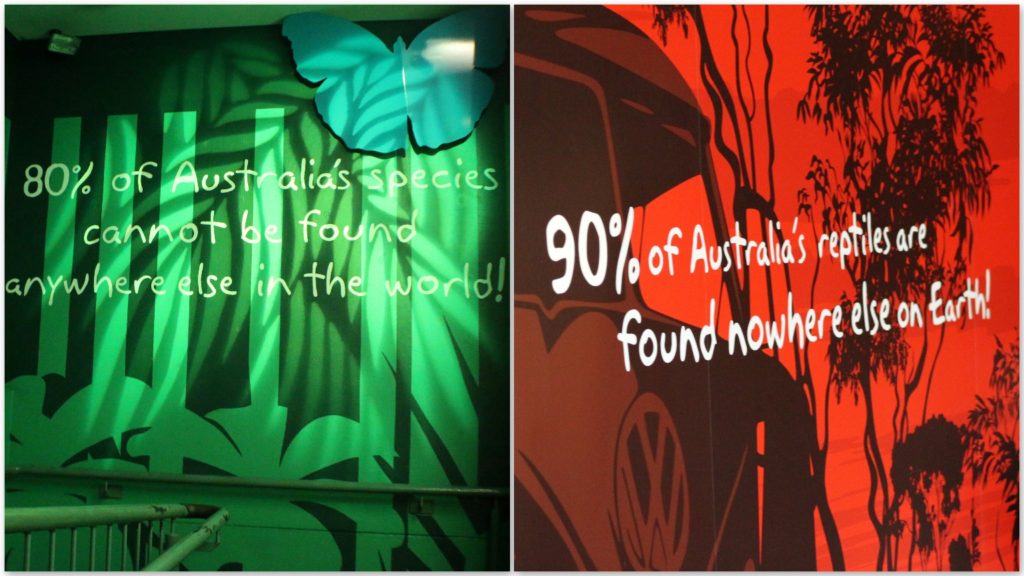
We had a chance to attend one of the interactive ‘Aussie Animal Encounters’ shows, which provided more information about mysterious and misunderstood snakes and lizards and offered hands on experiences with some of them after the show. It was a giant python and a few other reptiles.
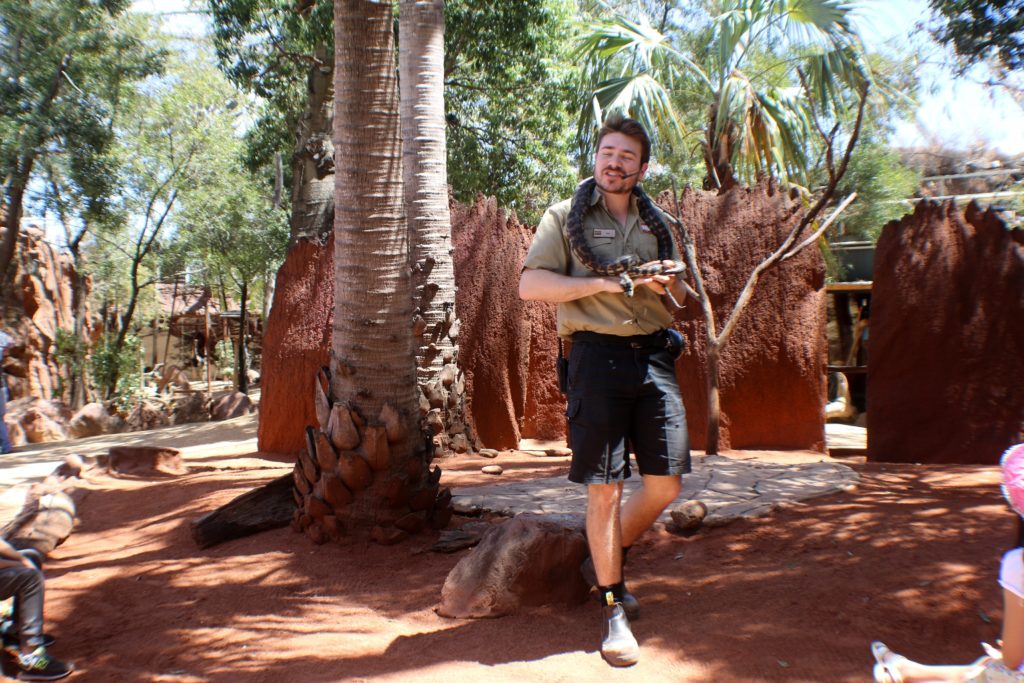
We were able to touch this Blotched blue-tongue lizard.
Walking trough Darling Harbour to the aquarium after a nice lunch at one of the restaurant’s outside settings.
